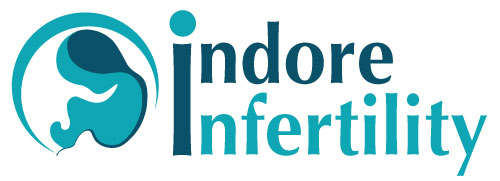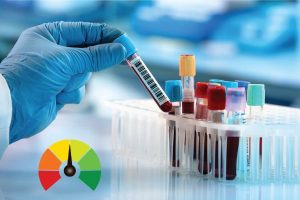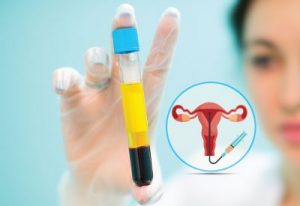Ovarian Rejuvenation for restoring Fertility is a latest technology giving hope to many with depleted ovarian reserve.
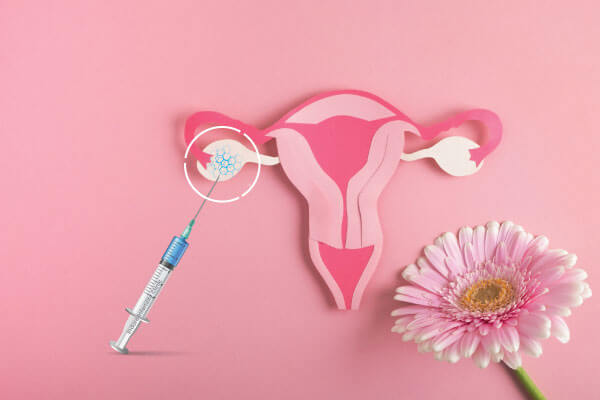
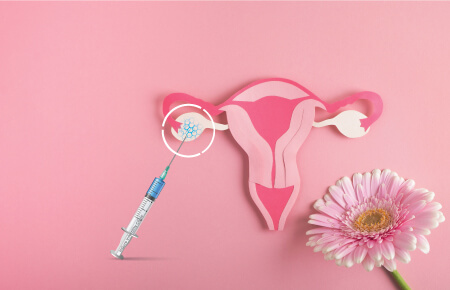
What is Ovarian Rejuvenation with PRP for treating infertility
Ovarian rejuvenation is a procedure that uses platelet-rich plasma (PRP) to stimulate the ovaries and improve female fertility. PRP is a concentrated solution of growth factors and cytokines that is extracted from a patient’s own blood. When injected into the ovaries, PRP may help to increase follicle growth, improve egg quality and quantity to boost the chances of pregnancy either by IVF or naturally.
PRP contains growth factors that can help to repair damaged tissue in the ovaries and stimulate the production of new eggs. Ovarian rejuvenation using PRP is a relatively new procedure, but it has shown promising results in early studies.
Ovarian rejuvenation using PRP is not a cure for infertility, but it can be a helpful option for women who are struggling to conceive due to very low AMH and poor ovarian reserve. The procedure is generally safe and well-tolerated, and it can be performed in an outpatient basis.
When is ovarian rejuvenation therapy with PRP recommended?
Ovarian rejuvenation using PRP is typically recommended for women who are experiencing the following:
- Low or diminished ovarian reserve. In this is a condition women tend to have lower than normal levels of AMH and lower number of eggs. Low ovarian reserve can make it difficult to conceive naturally or through assisted reproductive technologies (ART) like IVF.
- Poor response to IVF or Poor ovarian response. This means that a woman does not produce as many eggs as expected during an IVF cycle. Poor response to IVF can be a sign of low ovarian reserve or poor egg quality.
- Primary Ovarian insufficiency (POI) or very low AMH or early menopause. Young women diagnosed with very low AMH and poor ovarian reserve may stand a chance to conceive a child with their own eggs by undergoing ovarian rejuvenation using PRP.
Ovarian rejuvenation thereby has the potential to avoid oocyte donation or need for donor eggs and opt for self-oocytes during IVF cycle in this category of patients.
Does IVF with ovarian rejuvenation increase the IVF success Rate ?
Recently there have been many reports of improved IVF outcomes following ovarian rejuvenation, however, the scientific evidence supporting its efficacy is limited.
Many of the studies conducted so far have been small-scale or retrospective in nature, making it difficult to draw definitive conclusions. Further research is necessary to determine the true effectiveness of ovarian rejuvenation techniques in increasing IVF success rates.
Why is the need for treatments such as ovarian rejuvenation on the rise?
With an increase in age, number of oocytes or ovarian reserve declines. This is a naturally inherent and inevitable process also known as ovarian ageing or ovarian exhaustion.
In the past 50 years, the mean age at which women conceive their first child has gradually increased from 23 to 30 years. This clearly suggests that women are delaying childbirth. This means women are planning to conceive with fewer oocytes and depleted ovarian reserves. Hence the concept of ovarian rejuvenation has come into existence and gaining more and more importance in fertility practice.
The incidence Premature Ovarian Insufficiency has also risen over the past few decades, mostly due to lifestyle and environmental factors like pollution and use of plastic. Ovarian rejuvenation may have an important role for women who have very low AMH and diagnosed with poor ovarian reserve.
What are the advantages of undergoing PRP (Platelet Rich Plasma) therapy for Ovarian Rejuvenation: Is it beneficial for increasing ovarian reserve or increasing AMH ?
Numerous studies indicate that injection of PRP leads to the following changes:
- Higher antral follicles – Chances of retrieving more number of mature oocytes after ovarian stimulation during an IVF cycle.
- Higher AMH values – Chances of improving AMH values, Indicative of improved ovarian reserve
- Spontaneous resumption of menstrual cycles in women with premature menopause.
- Improvement in ICSI / IVF Cycle outcome – In poor responders with increased number and quality of oocytes leading to better embryos.
- Improved hormone profiles – E2 and FSH levels
- Higher number of retrieved oocytes in IVF cycle resulting in higher and better quality of embryos in IVF cycle.
It however must be stated that these are very early days for PRP therapy and a lot of data is being collected on the basis of trials currently being undertaken. Exact nature and degree of impact will be known in the days to come once these randomised control trials are complete.
Are there any side effects of PRT therapy for ovarian rejuvenation ?
As ovarian rejuvenation therapy with Platelet-Rich Plasma (PRP) is a relatively new and evolving technique, the long-term safety and potential side effects are still being investigated.
However, based on the current understanding, it can be stated that PRP therapy is minimally invasive and may not cause any harm and may have a beneficial effect on the ovarian reserve. PRP therefore should be considered as a viable alternative to oocyte donation if you have been diagnosed with low AMH or poor ovarian reserve.
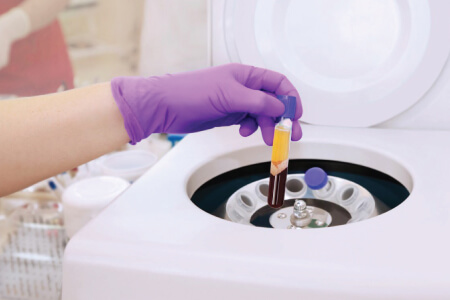
How is Ovarian Rejuvenation with PRP performed?
Preparation: On the day of the procedure, patient will be prepared for the PRP therapy. This may involve drawing a small amount of your own blood, usually from your arm. The blood sample is then processed using a centrifuge machine to separate the PRP from other components of the blood.
Anesthesia: Local anesthesia or mild sedation may be administered to numb the area where the PRP will be injected. This helps minimize any discomfort during the procedure.
PRP Injection: Using ultrasound guidance to ensure accurate placement, your fertility specialist will inject the concentrated PRP directly into the ovaries. The number and location of injections may vary depending on the individual’s condition and the judgement by the IVF specialist.
Post-procedure Care: After the PRP injections, you may be monitored for a short period to ensure that there are no immediate complications or adverse reactions. Your IVF doctor will provide instructions on post-procedure care, which may include taking any prescribed medications and avoiding strenuous activities for a certain period.
Follow-up: follow-up appointments with your fertility doctor will help to monitor your response to the treatment, assess changes in your ovarian response and evaluate the need for additional cycles of ovarian rejuvenation.
Ovarian rejuvenation with PRP is done as a day care wherein the patient is discharged after 3-4 hours.
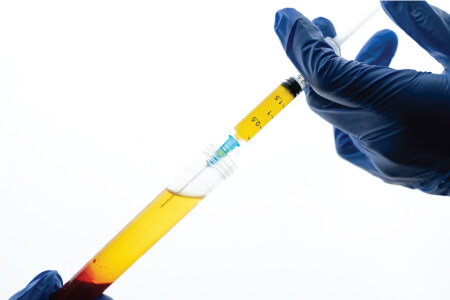
Is ovarian rejuvenation with PRP done under anaesthesia ?
Patient is usually given mild sedation with local anaesthesia for the procedure.
What are the precautions that needs to be taken after the procedure of ovarian rejuvenation with PRP ?
After the procedure, routine follow up for IVF cycle is required and no extra precautions are advised.
How much does ovarian rejuvenation with PRP cost?
If done under local anaesthesia, one session of ovarian rejuvenation with PRP costs 12000 Rupees. If done under general anaesthesia and combined with laparoscopy, it would cost around 40,000 Rupees. These are the costs at the time of writing this article and may vary with time. For exact costing, please contact clinic.
How many sessions of Ovarian rejuvenation with PRP treatment are usually needed ?
The number of sessions needed for ovarian rejuvenation therapy with Platelet-Rich Plasma (PRP) can vary from patient to patient. The major factors to be considered for deciding the number of sessions often depend on patients age, current ovarian reserve, response to treatment etc. Since PRP therapy for ovarian rejuvenation is still an evolving technique, there is no standardized protocol regarding the number of sessions.
In some cases, a single session may be sufficient, while in other cases multiple sessions of PRP therapy may be suggested to optimize the potential benefits. The treatment plan will be personalized based on factors such as the individual’s age, ovarian reserve and fertility goals.
How long does it take for ovarian rejuvenation to start acting? How much time should be given between ovarian rejuvenation and ovarian stimulation for IVF?
The time taken for ovarian rejuvenation therapy with Platelet-Rich Plasma (PRP) to start acting can vary from patient to patient and the exact timeline is still being studied. Since PRP therapy for ovarian rejuvenation is a relatively new technique, there is limited research available on the specific timeframe for results.
In general, it may take several weeks or months for the effects of ovarian rejuvenation with PRP to become apparent. This is because the PRP is intended to stimulate and regenerate ovarian tissue and ovarian germ cells, which may require time for cellular changes and tissue repair to occur.
Regarding the timing between ovarian rejuvenation and ovarian stimulation for in vitro fertilization (IVF), there is no standard consensus or established guideline. However at least 6 weeks gap should be given between ovarian PRP injection and ovarian stimulation for IVF. Patients should take multivitamins and antioxidants during this period.
How will I know whether ovarian rejuvenation with PRP has been effective?
The two tests done commonly to assess ovarian reserve are AMH and transvaginal sonography for antral follicle count. After 4-6 weeks, if ovarian rejuvenation has been effective, there will be an increase in AFC and AMH values indicating an improvement in the ovarian reserve.
Does ovarian rejuvenation with PRP give 100 % guaranteed results?
Unfortunately, there is no 100% guaranteed result with any kind of therapy for ovarian rejuvenation. Initial studies appear to be promising and therefore one should definitely consider this as an option to oocyte donation since this gives patient a chance to conceive with their own eggs.
Where can I get ovarian rejuvenation treatment done in Indore ?
We at Indore Infertility Clinic the best IVF centre in Indore, offer ovarian rejuvenation with PRP to selected group of patients after thorough counselling. Please get in touch with us to discuss if ovarian rejuvenation makes sense for your case.
